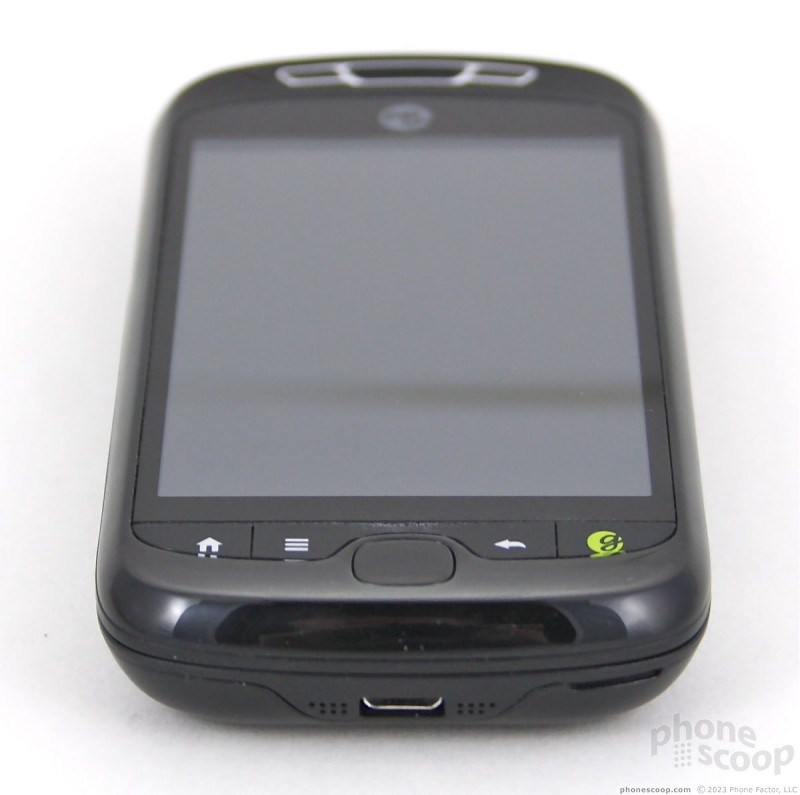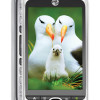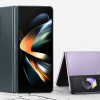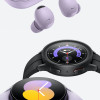Review: HTC myTouch 3G Slide
If you place the original T-Mobile myTouch 3G next to the T-Mobile myTouch 3G Slide, the family resemblance is obvious. They were cut from the same HTC-made cloth, no doubt. The overall shape and flow of the lines on the Slide are nearly identical to the original. The most notable difference is the size. The Slide is bigger in every dimension. Where the original myTouch was slim, light, and pocketable, the Slide is thick, heavy, and not-as-pocketable. It still feels good in the hand, though, as the smooth plastics and rounded edges do away with any edges that might cause discomfort. Did I mention that it's heavy?
The display eats up most of the Slide's front face. Below it are the typical Android control buttons, placed in exactly the same order as on the original myTouch 3G: Home, Menu, Back, Search. These buttons are flush with the surface of the Slide, wedged between the bottom of the display and the curved chin of the phone. I didn't care for this placement. They felt tucked too tightly, and travel and feedback was not satisfactory. It is difficult enough to tell them apart that accidentally pressing Back when you mean Search - or Menu when you mean Home - is a real possibility.
The track ball has been replaced with an optical trackpad. The track pad is positioned between the Menu and Back buttons. I found that moving my thumb quickly between those two buttons often accidentally activated the trackpad, cause the screen or cursor to jump. This is annoying. I mostly skipped the track pad in favor of using the touch screen.
The Slide's slider mechanism works fine, but I didn't care for the feel of it. It has a cheap, plasticky texture that felt under-engineered. There is slight spring assistance, so it opens with no trouble, but it wasn't smooth. There was some grating of plastic on plastic.
The full QWERTY keyboard has four rows, but that doesn't mean numbers get a row all to themselves. The top row doubles as numbers and letters. On most keyboards I've encountered, the secondary characters printed on the keyboard are set off (whether via color, or smaller print) so that it is easy to tell which the primary and secondary characters are. Not so on the Slide. That means you get keys that look like this: Q1, W2, E3, etc. It's not really a problem until you get to the right side of the keyboard, where you'll find: O9 and P0. See the difference? Yeah, in a hurry, neither did I. That means a lot of typos. Frustrating. Aside from that, the keys have a decent (though not great) shape to them and acceptable travel and feedback. The bottom row has separate comma and period keys, which is always helpful, and dedicated keys to launch search and reach odd symbols/characters.
The volume toggle is tucked on the left side of the phone. It is nearly flush with the surface, making it a wee bit difficult to find in a hurry. Once you find it, travel and feedback are good. There is a camera button on the right side of the phone. It is a two-stage key, and each stage had a distinct feel. The microUSB port is on the bottom, the 3.5mm headset jack is on top. The power/lock key is also on top. Given how vital a key it is, I thought it was a little too hard to find, and travel and feedback were a bit on the weak side.
The microSD card port is buried under the battery cover, but thankfully you can replace the card without removing the battery.














 HTC myTouch 3G Brings Android 2.1 and QWERTY Goodness to T-Mo
HTC myTouch 3G Brings Android 2.1 and QWERTY Goodness to T-Mo
 Samsung Refreshes Galaxy S Series with S Pen, New Cameras
Samsung Refreshes Galaxy S Series with S Pen, New Cameras
 Samsung Refines its Foldable Phones
Samsung Refines its Foldable Phones
 Samsung Upgrades its Wearables
Samsung Upgrades its Wearables
 iPhone 14 Plus Offers a Big Screen For Less
iPhone 14 Plus Offers a Big Screen For Less
 HTC myTouch 3G Slide
HTC myTouch 3G Slide


